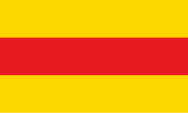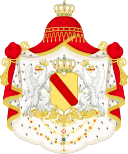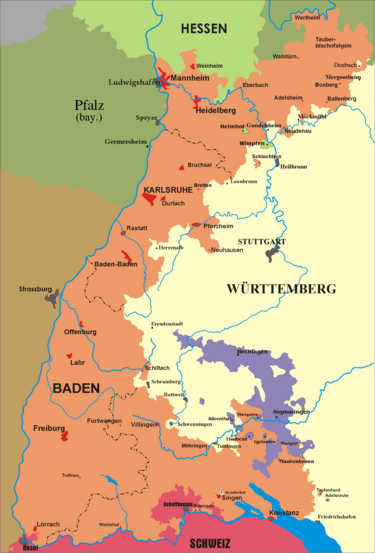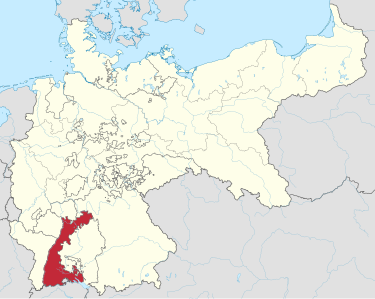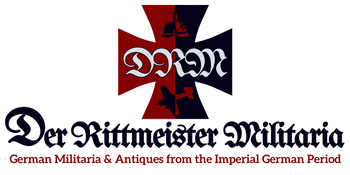Baden (Großherzogtum Baden)
CLICK HERE FOR ALL PRODUCTS RELATED TO BADEN
Basic Information
- Official Name: Grand Duchy of Baden (Großherzogtum Baden)
- Capital: Karlsruhe
- Motto: "Fidelitas" (Fidelity)
- Established: 1806 as a Grand Duchy (earlier as the Margraviate of Baden in 1112)
- Dissolution: Transitioned to the Republic of Baden in 1918 following the abdication of Grand Duke Friedrich II.
-
Key Symbols:
- Coat of Arms: A golden shield with a red diagonal stripe.
- Flag: Red and yellow horizontal stripes.
Geographical Overview
-
Location:
Situated in southwestern Germany, bordered by France to the west, Switzerland to the south, Württemberg to the east, and Bavaria to the northeast. -
Size:
A medium-sized state with fertile river valleys and picturesque mountainous regions. -
Land Features:
- Rhine River: Formed Baden’s western border and served as a vital trade route.
- Black Forest (Schwarzwald): A mountainous region rich in natural beauty and resources.
- Lake Constance (Bodensee): A significant hub for trade, tourism, and fishing.
Historical Timeline
-
Early Baden:
- 1112: Established as the Margraviate of Baden under Hermann II of Zähringen.
- 1535–1771: Divided into Baden-Durlach and Baden-Baden, later reunified under Charles Frederick.
-
Grand Duchy Era (1806–1918):
- 1806: Elevated to a Grand Duchy under Napoleon’s Confederation of the Rhine.
- 1815: Joined the German Confederation after Napoleon’s defeat.
- 1871: Became part of the German Empire while maintaining internal autonomy.
-
Decline (1918):
- The abdication of Grand Duke Friedrich II during the German Revolution ended the monarchy, transitioning into the Republic of Baden.
Notable Rulers and Leaders
- Charles Frederick (1738–1811): Modernized and unified Baden, establishing its status as a Grand Duchy.
- Leopold (1830–1852): Introduced liberal reforms and modernized the legal and educational systems.
- Friedrich I (1852–1907): A progressive ruler who supported German unification under Prussia.
- Friedrich II (1907–1918): The last Grand Duke, who abdicated peacefully in 1918.
Military and Political Strength
-
Military Contributions:
- Baden contributed well-trained troops to the German Imperial Army.
- Played a key role in the Franco-Prussian War (1870–1871), supporting German unification.
-
Political Role:
- Baden was a liberal state, known for its progressive constitution granting civil rights and religious tolerance.
- Supported Prussian leadership in the unification of Germany.
Cultural Contributions
-
Architecture:
- Karlsruhe Palace: The seat of the Grand Dukes, exemplifying Baroque architecture.
- Heidelberg Castle: A blend of Gothic and Renaissance styles, a symbol of Romanticism.
-
Arts and Music:
- Hosted composers such as Johannes Brahms and Carl Maria von Weber.
- The Badische Staatskapelle (Baden State Orchestra) became renowned for its performances.
-
Education and Science:
- Home to Heidelberg University, one of the oldest and most prestigious institutions in Europe.
- Baden was a pioneer in legal studies, medicine, and engineering.
-
Cuisine and Wine:
- Famous for Badischer Schäufele (smoked pork shoulder) and Black Forest Cake.
- Produced some of Germany’s finest wines, particularly Rieslings from the Rhine Valley.
Fall of Baden
-
World War I (1914–1918):
- Economic hardship and military losses led to political unrest.
-
German Revolution (1918):
- The abdication of Grand Duke Friedrich II marked the end of the monarchy, and Baden transitioned to a republic.
-
Post-WWII (1945):
- Divided into French and American occupation zones, later merging with Württemberg in 1952 to form Baden-Württemberg.
Connections to Products
-
Military Memorabilia:
- Baden Army medals, such as the Order of the Zähringer Lion, awarded for distinguished service.
- Helmets and uniforms from Baden regiments, known for their elegant designs.
-
Cultural Artifacts:
- Porcelain and glassware produced in Baden, reflecting its cultural refinement.
- Historical maps and documents detailing Baden’s governance and role in German unification.
-
Architectural Replicas:
- Miniatures of Karlsruhe Palace or Heidelberg Castle, iconic landmarks of Baden.
-
Wine and Culinary Memorabilia:
- Vintage wine labels, corkscrews, and maps of Baden’s wine regions.
- Cookbooks and tools for preparing traditional Badenese dishes.
